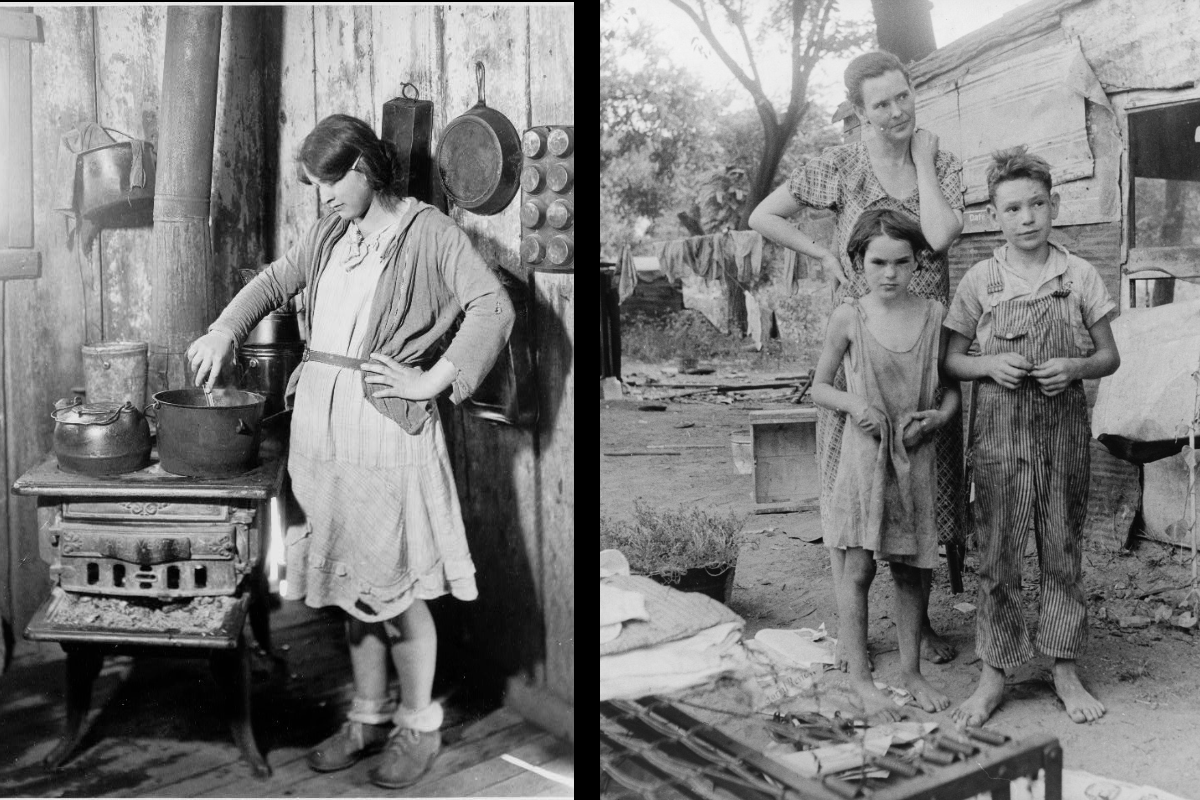You know how girls' clothing is often stereotyped? Well, so is boys'. These moms were tired of it.
"You know what? My son can like what he likes, gender norms be damned!"
You've probably seen some of the viral videos and photos about parents who are taking a stand and sending this message to the world.
Like the dad whose son asked for a Disney Little Mermaid doll and who enthusiastically exclaimed, "YEAH! That's how I feel. I let my boys choose their life," in answer to his own question, "Now how do you think a dad feels when his son wants to get THIS?"
Or the dad who made a children's custom kitchen out of an old piece of furniture for his son's 2nd birthday and shared it online ... only to be attacked by insecure angry trolls who told him he was going to turn his son gay. (Side note: What even?!)
That dad was having none of it, responding in part, "He always wants to watch us cook and likes being involved, so we thought this would be a good idea. Furthermore, if my kid wanted a barbie doll I would get it for him. If that is what he wants, then that is what he wants. It's his decision what he wants to play with. Not mine." (Can I get an amen?)
These dads aren't the only ones fed up with the way that ridiculous gender expectations are hurting boys. Parents everywhere are taking a stand.
Three women who own clothing companies for kids recently got together to fill a rather gaping hole in the clothing market.
Courtney Hartman of Free to Be Kids and Jessy & Jack, Jo Hadley of Handsome in Pink, and Martine Zoer of Quirkie Kids are moms and small business owners who were tired of the limitations on the boys' clothes you find in most stores. So they got together to promote clothing options that are pink and purple, show animals traditionally geared toward girls (think kittens and butterflies), and include words like "love" emblazoned on them.
And they're awesome.
Options like this:
And this:
Free To Be Kids. Photo credit: Liz Donovan Photography.
And this:
I spoke to the masterminds behind the clothing lines to find out what motivated them to tackle this project.
Hartman, Hadley, and Zoer aren't strangers to teaming up. They were among the nine women behind the #clotheswithoutlimits movement created to give girls more clothing options.
Now, the three are hoping to do the same for boys. At first, you might think that's unnecessary. I mean, girls often shop from the boys' section because there are more options.
But think about it: When boys show interest in things stereotypically considered "girly," they're often labeled as gay. That's ridiculous because clothes or, you know, an interest in kitchens doesn't determine a kid's orientation. (And do I even have to say it? OK, I'll say it: It doesn't matter if they're gay.)
Wouldn't it be great if boys weren't limited to stereotypically "boy" clothes?
Handsome in Pink. Photo credit: Jo Rainbow Photography.
"We think it's time … boys should also be able to like kittens and be proud to be kind and loving and they should also be able to like pink," Hartman told me. "They're just exploring being boys and all the things there are to like!"
Free To Be Kids. Photo credit: Liz Donovan Photography.
Zoer wants our generation of boys to like whatever they want to like — not what they're made to feel they should like. They can "love sports, love pink, love climbing trees…" she said. "Whatever it is that they love to do, it doesn't need to define them."
Jessy & Jack. Photo credit: Happy Genes Photography.
Sure, we've come some way in tackling gender norms, but we still have a long way to go. Hadley talked about a recent Lego magazine her son received.
"On the back cover of the magazine were the words 'Charge into Battle 2016'" she said. "And it's this image of all of these Lego figures covered in armor with aggressive faces... and they're fighting and there are big long swords and fire."
Meanwhile, she described an insert for the Lego Friends — the ones marketed toward girls:
"There are six sexualized girls with big eyes and short dresses. They all have their arms around each other, having their pictures taken. The comic inside is about a big slumber party they're going to have and it's all lovey dovey. They're not even talking about anything."
Her conclusion? "Our kids are are just so imbued in this extreme division of battle versus soft, sexualized friendships. They're both wrong," she said. "They're two extremes and things need to come more toward the center — more access to everything!"
Hadley's point is strong — and it carries over to clothing, too.
Free To Be Kids. Photo Credit: Monte Attard.
Why can't boys' clothes project kindness the way girls' do?
Hartman explained: "One of the things I enjoyed for my line is designing a shirt with the word 'love' on it. Love is on tons of girls' clothes, but not on boys'. How is love a girl thing?"
The message is that boys are aggressive. But why can't they be kind?
"There's an overarching message of aggression [with boys]. The words are always 'troublemaker' and 'eat my dust' — competitive — but they are not kind and not soft in any way. It's sad that we're expecting boys to have this hard facade."
Free to Be Kids. Photo credit: Kerra Vaughan.
Jessy & Jack. Photo credit: Ericka Lowe.
At the end of the day, these expectations harm kids — no matter what gender.
People have been pushing back against the expectations we have for girls for a while now, which is amazing and so important. We need to keep doing it because we're making progress. But it's a little more recent that folks have started to take a stand against silly expectations for our sons.
It's time we did, because our sons deserve to be who they are and like what they like. And those very same expectations are hurting our daughters, too.
"If you give kids free reign, they'll like what they like," Hartman said.
I couldn't agree more. Here's to letting our kids like what they like!





 Bed Bugs Belarus GIF
Bed Bugs Belarus GIF  Bed bugs are about the size of an apple seed.
Bed bugs are about the size of an apple seed.  bed bugs
bed bugs  Checking mattresses for signs of bed bugs at a hotel can help you avoid bringing them home.
Checking mattresses for signs of bed bugs at a hotel can help you avoid bringing them home. 
 Stayin Alive GIF by Bee Gees
Stayin Alive GIF by Bee Gees 
 Team meeting chaos: one employee silently pleads for help.
Team meeting chaos: one employee silently pleads for help. Overcoming fears: Shadow looms large, but courage stands firm.
Overcoming fears: Shadow looms large, but courage stands firm. Confused expression against a bright yellow background.
Confused expression against a bright yellow background.
 BabyCenter's Top 10 baby names for 2025.Canva
BabyCenter's Top 10 baby names for 2025.Canva The name Luca has seen a rise in popularity.
The name Luca has seen a rise in popularity.  Susannah has climbed over 3,000 spots on the baby name chart.
Susannah has climbed over 3,000 spots on the baby name chart.  Pope Francis passed away in April 2025.
Pope Francis passed away in April 2025.  How do you choose a name for a brand new human?
How do you choose a name for a brand new human?